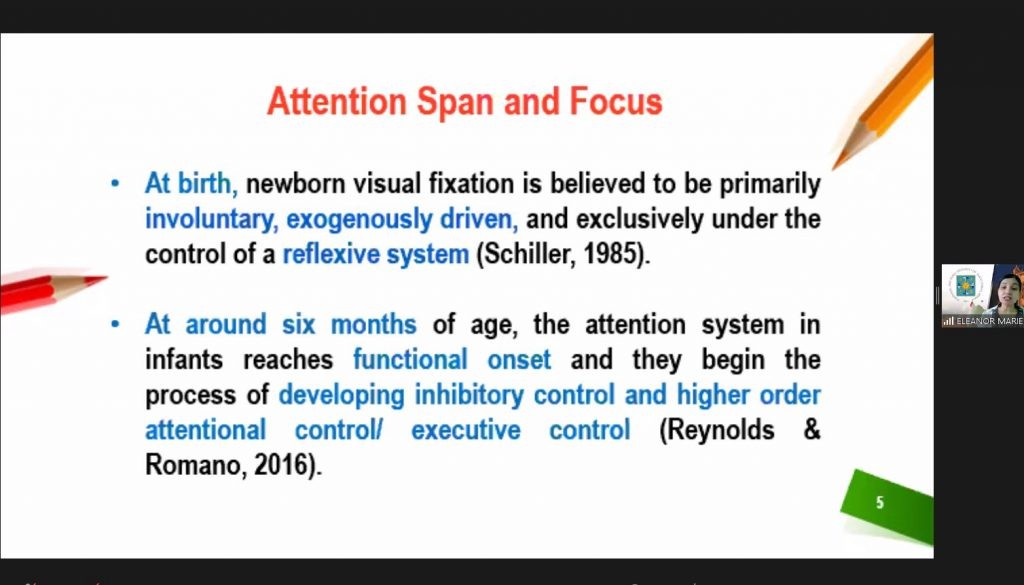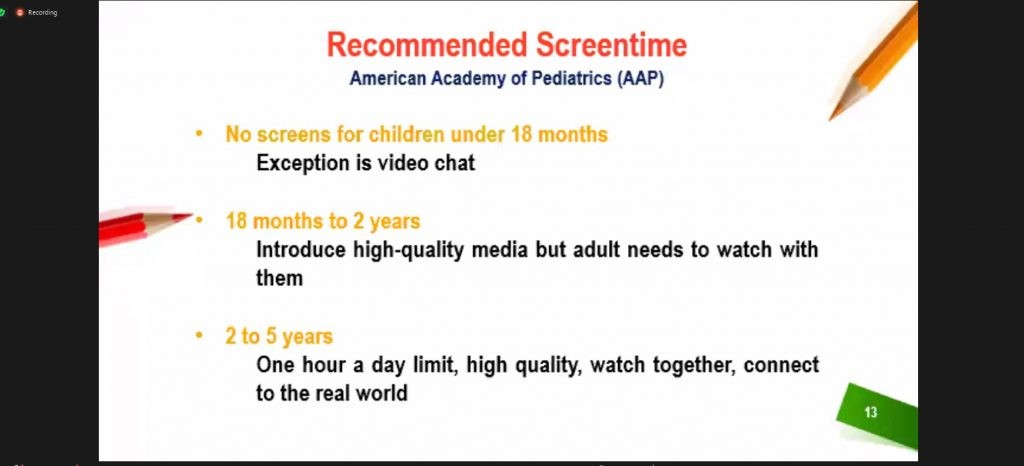To help parents bring out the potential of their children, Ms. Eleanor L. Bahrami-Hessari, MA, MS of the Department of Elementary Education of the College of Education shared her expertise in her talk entitled “How To Improve Your Child’s Attention Span” on September 18, 2021 via Zoom. The webinar was hosted by Brain Do Jo Online Tutorials.




Walk through their emotions
The behavioral and the emotional aspects of children are two of the most complex things that are observed, according to Bahrami-Hessari. In her experience, both as an educator and as a mother herself, she recommended the parents to allow the children go through their emotions, especially when they are crying.
“When children are really emotional, they cannot really process anything we say. Let them go through the course of those emotions. When they are done, we help them walk through what happened,” she said.
Looking at boredom in a positive light
According to Bahrami-Hessari, when a child directly expresses boredom to his/her parents or teachers, it is a positive sentiment. Contrary to popular belief, boredom, she noted, is essential to children not just in acquiring certain skills, but on how they independently deal with the boredom that they experience.
“The key to help kids learn how to manage their boredom is to help them develop independence and feel that they have control over the choices they make [and] what they want to do about that boredom,” she said. “Boredom allows our children to manage their frustrations and regulate their emotions; it helps a lot in their development of planning strategies, including problem solving, flexibility, and organizational skill. In the process, boredom also fosters that creativity of self-esteem and original thinking,” she added.
Likewise, Bahrami-Hessari encouraged the parents to take a proactive approach than to be reactive in helping children go through the course of boredom. “Sit aside […] with your child to create a list of activities that they enjoy,” she said. “[Ask them], ‘What part of your list do you want to do right now?’ so you have that kind of go-to set of activities that you can do,” she added.
Moreover, Bahrami-Hessari said that it is helpful to make a visual chart of activities that follow a schedule since open-ended time could bring discomfort and frustration to children, making them feel uncertain on what activity would commence.
“It gives them that independence because all they have to do is to refer to that visual schedule. It will assure them that they are not endlessly or aimlessly moving through the course of the day and not knowing what to do. It helps them also to stay on task. It provides them a sense of structure and also time,” she added.
Choices within limits
To help children boost their motivation in performing tasks, Bahrami-Hessari said the parents must also provide them with choices within limits.
“When we give children choices, they feel more motivated and accomplished with the task at hand. Let your child play a role in setting rules and in making their schedule. Make sure that both of you and your child agree on the set time and place, and even at the parts of the schedule. This can eliminate a lot of homework decisions between you and your child,” she said.
“[Providing the children with] choice is something that we grown ups tend to forget. We tend to take over their choice, it is like as if the kids do not have a choice anymore.” she said.
Bahrami-Hessari handles professional and specialization courses in the College of Education’s elementary education programs, specifically the Special Needs Education program.




